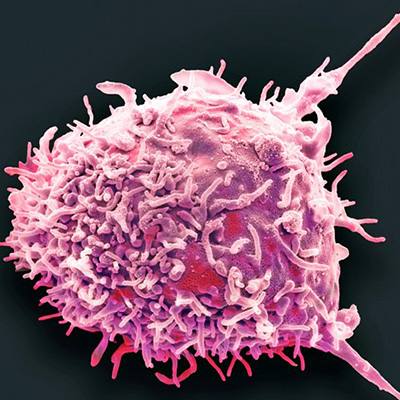-
Individualized Medicine
Twins take action: diagnosed with Tay-Sachs, sisters raise awareness to find treatment and a cure

Many people have moments when they are clumsy – accidentally spilling things or stumbling when they walk. In hindsight, these events were early signs that twins Katie and Allie Buryk had late onset Tay-Sachs disease, a rare genetic disorder.
But it wasn’t until one day when the two sisters were home from college that their mother, Alexis, noticed that something was wrong. Neither Katie nor Allie had the strength in their legs to easily stand – both needed their hands for support.
What followed was a long search for a diagnosis, and then a call to action. Mayo Clinic physicians have been alongside the twins during their journey.
Finally – a diagnosis
After years of doctor’s appointments and tests, Katie and Allie finally got an answer to explain their symptoms. In 2014, genomic testing revealed the twins’ had late onset Tay-Sachs disease, a rare inherited disorder that causes progressive neurological damage.
Mayo physicians collaborated with the twins’ physicians to confirm the diagnosis. Marc Patterson, M.D., a Mayo Clinic neurologist, and his colleagues reviewed the sisters’ genetic test results and clinical information and suggested strategies to manage the twins’ symptoms.
“I was glad to have a diagnosis because in my mind I knew something was wrong. I don’t want doctors to write patients off just because we are a medical mystery, a challenge.” - Katie Buryk
“I was glad to have a diagnosis because in my mind I knew something was wrong,” says Kate. “I don’t want doctors to write patients off just because we are a medical mystery, a challenge.”
So what is Tay-Sachs and how rare is it?
Tay-Sachs is one of approximately 50 inherited lysosomal storage disorders. Patients with these diseases are missing certain enzymes, which cause build-up of toxic materials in their body’s cells. Tay-Sachs patients are missing an enzyme that helps break down fatty substances. As these substances build up in nerve cells, they cause progressive neurological damage.

People with ancestors from eastern and central European Jewish communities, certain French Canadian communities and the Cajun community in Louisiana are at increased risk for the disease. Fewer than 100 cases of Tay-Sachs are diagnosed each year, most commonly in infants and children. There is no cure or approved treatment for the disorder.
Dr. Patterson explains why Tay-Sachs and other rare diseases can be difficult to identify.
“There are more than 5,000 rare diseases that affect 25 million people in the U.S. Because disorders like Tay-Sachs are so rare, symptoms are often missed,” says Dr. Patterson. “Mayo Clinic researchers are working every day to find therapies for diseases for which there are no treatments, aiming to be the bridge from hope to healing.”
Despite challenges, motivated to raise awareness
Each day, Katie and Allie manage their symptoms as they carry on with their respective careers.
Katie’s disease has progressed more rapidly. She has more difficulty walking long distances and climbing stairs. As a result, she has relocated from New York to Hilton Head, South Carolina, where she works remotely as an assistant planner for a large retailer.
Allie works as a nurse, caring for stroke patients and others with severe neurological problems, and is also pursuing a master’s degree. While she has fewer mobility problems than Katie, Allie has experienced changes to her speech, making it hard for people to understand her when she speaks quickly.
Despite their challenges, the Buryk family is committed to building awareness about Tay-Sachs disease. They have created a fund to help support Tay-Sachs research through the National Tay-Sachs & Allied Diseases Association.
This past fall, Katie and Allie shared their story at Individualizing Medicine Conference 2017: Advancing Care Through Genomics, hosted by Mayo Clinic Center for Individualized Medicine. They had the chance to learn firsthand how researchers from Mayo Clinic and around the world were coming together to find treatments for rare diseases like Tay-Sachs.
“It’s exciting to see the research underway. I hope that our efforts to build awareness will someday lead to finding a treatment and cure,” says Katie.
Knowledge is power
During the last two decades, great strides have been made in understanding the genomic mechanisms behind Tay-Sachs. This knowledge also sheds light on the underlying causes of more common neurological disorders, such as Alzheimer’s and Parkinson’s disease.
“We now have a genetic test to diagnose Tay-Sachs that we hope will someday be used for newborn screening. This test can also identify whether prospective parents are carriers, which is important information for family planning.” - Marc Patterson, M.D.
“We now have a genetic test to diagnose Tay-Sachs that we hope will someday be used for newborn screening. This test can also identify whether prospective parents are carriers, which is important information for family planning,” says Dr. Patterson
Allie echoed Dr. Patterson’s enthusiasm for genetic testing.
“If everyone had the chance to have genetic testing, they would learn a lot about themselves. Knowledge is power,” she says.
Join the conversation
For more information on the Mayo Clinic Center for Individualized Medicine, visit our blog, Facebook, LinkedIn or Twitter at @MayoClinicCIM.
See highlights from our recent Individualizing Medicine Conference 2017: Advancing Care Through Genomics:







